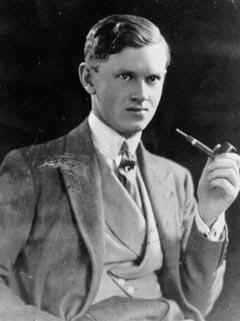
Could the Holy Father have been any clearer on Eucharistic theology in his sermon at Westminster Cathedral? (You can read the sermon plus analysis
here.) Again and again he emphasized the sacrificial nature of the Mass, that it is Christ Himself, truly present Body, Blood, Soul, and Divinity, in the Eucharist, offered to God in atonement for our sins. Ever since our Lord instituted the sacrament, it has been the center and heart of the Mass. It was the target of especial hatred by the Protestant reformers, who attempted to eradicate all mention of the Oblation from the liturgy. Archbishop Cranmer, architect of the new Lord's Supper in Reformation England, introduced revisions to the Catholic Mass that, bit by bit, chipped away at the sacrificial character of this central act of Catholic worship and replaced it with a bland symbolism. One can truly say that the Church's ancient Eucharistic theology was the root and source of division between Catholic and Protestant theologian during the British schism. It was for this belief--lived out in the Mass said by fugitive priests--that many Catholics died.
Fast forward 500 years or so, and we see a modern Church whose Eucharistic understanding is less than clear, and whose defense of the Eucharist from desecration stands in pitiful contrast to that of the martyrs of the past. There isn't enough space here to discuss what's transpired over these centuries to get us to this lamentable state, but it's no secret that the liturgical revolution of the 1970s played some part. Consider, among other things, the 1969 General Instruction on the Roman Missal, whose theology so scandalized Catholics that Pope Paul VI required that it be revised. What in particular was wrong with the first Instruction? Precisely this: that it obscured the Church's ancient and venerable teaching on the Eucharist. Instead of Christ's actual Body and Blood being offered on the altar as an oblation to God on behalf of His people, the Instruction emphasized that the "Lord's Supper" was the offering of God's people together with the bread--a uniquely Protestant notion. True Catholic doctrine, however, teaches that although God's people are indeed offered in the Holy Sacrifice, they are not the essential or central offering--it is, rather, Christ's
real Body and Blood that are being offered for the Church, regardless of those present.
How could a papally approved document be so full of error? Archbishop Bugnini--known to be the architect of the Novus Ordo--was also the driving force behind the new Instruction. He disobeyed Pope Paul VI by failing to submit the draft of the Instruction to the Congregation for the Doctrine of the Faith--and reaped the consequences. The public outcry at the scandalous new Eucharistic theology was so great that the Pope ordered the revision of the Instruction, which emerged the next year, correcting the errors of the first.
Still, in spite of this, catechesis in seminaries and churches suffered, and we found more and more priests teaching that the offering on Catholic altars is that of the bread and wine together with the people, and not much more. The emphasis fell increasingly on us as the people of God, and less on Christ as the sacrificial Lamb. (Incidentally, this is really what is at the heart of traditionalists' concerns about the Novus Ordo. It is not ultimately the music, the bells, the incense, the sermons, or even the Latin. It is, rather, the clarity of Eucharistic theology in the Mass. Once that clarity is gone, so goes the liturgy. Beautiful, reverent liturgy is an organic outgrowth of true belief in the Real Presence; if it really is the spiritual and physical presence of the Lord of the cosmos in that little golden tabernacle, then His sanctuary had better be worthy of Him! Then the music had better be worthy of Him! Then our reception of Holy Communion had better be worthy of Him! Then our liturgy as a whole had better be worthy of Him! And the language ought to be a sacred tongue worthy of the mystery; just as our Lord used the liturgical language of Hebrew when He instituted the Eucharist at the Last Supper, rather than His everyday Aramaic, so it's fitting that our priests should use the liturgical language of Latin for the sacred mysteries.) Just the other day, I was alarmed by an otherwise orthodox-sounding priest explaining the Eucharist as a memorial, a calling to mind of Christ's sacrifice, comparing it to the memory of a loved one recalled at his graveside. But the only way such an analogy would work is if, instead of simply recalling the memory of our loved one at his grave, the deceased literally rose from the dead and stood right in front of us! That is how present is Christ's Body and Blood in the Sacred Host. It's not mere memorial. It's not mere "calling to mind." It is
actual physical presence.That's why the Holy Father's sermon at Westminster Cathedral, in once-Catholic England, in the presence of the Archbishop of Canterbury--whose office historically played such a role in eradicating Eucharistic understanding throughout the fair isles--was significant. The Holy Father knows that the false ecumenism that has been the root of so much harm to the faith, that has served to temporarily placate non-Catholics, to the detriment of true Catholic doctrine, is untenable. As he said at the ecumenical meeting at Lambeth Palace, inclusiveness cannot come "at the expense of Christian truth." It was that central belief of Christian truth--the Holy Sacrifice of the Mass, offered on Catholic altars the world over ever since that night in the Cenacle, and so much abused of late--that Pope Benedict proclaimed without compromise. True ecumenism, he understands, requires speaking the truth, as challenging as that truth may be, in the hope that it will be embraced and the soul reconciled to God and thus saved.
 Emily Witt discusses the phenomenon of young fogeyism in Great Britain.
Emily Witt discusses the phenomenon of young fogeyism in Great Britain. Yes, I know scores of people claim to have benefited from the messages, and that there have been conversions and reignition of the faith--but that doesn't change the fact that two successive bishops of the diocese have decreed the apparitions not authentic, and the Catholic Church has deferred to the bishops' judgment on the matter, forbidding any diocese from publicly sponsoring pilgrimages there, or from publicly inviting the seers to speak. (And, contrary to popular opinion,
Yes, I know scores of people claim to have benefited from the messages, and that there have been conversions and reignition of the faith--but that doesn't change the fact that two successive bishops of the diocese have decreed the apparitions not authentic, and the Catholic Church has deferred to the bishops' judgment on the matter, forbidding any diocese from publicly sponsoring pilgrimages there, or from publicly inviting the seers to speak. (And, contrary to popular opinion, 

 Could the Holy Father have been any clearer on Eucharistic theology in his sermon at Westminster Cathedral? (You can read the sermon plus analysis
Could the Holy Father have been any clearer on Eucharistic theology in his sermon at Westminster Cathedral? (You can read the sermon plus analysis 


 When a pastor has been afraid to assert what is right, has he not turned his back and fled by remaining silent? Whereas if he intervenes on behalf of the flock, he sets up a wall against the enemy in front of the house of Israel.
When a pastor has been afraid to assert what is right, has he not turned his back and fled by remaining silent? Whereas if he intervenes on behalf of the flock, he sets up a wall against the enemy in front of the house of Israel. 

